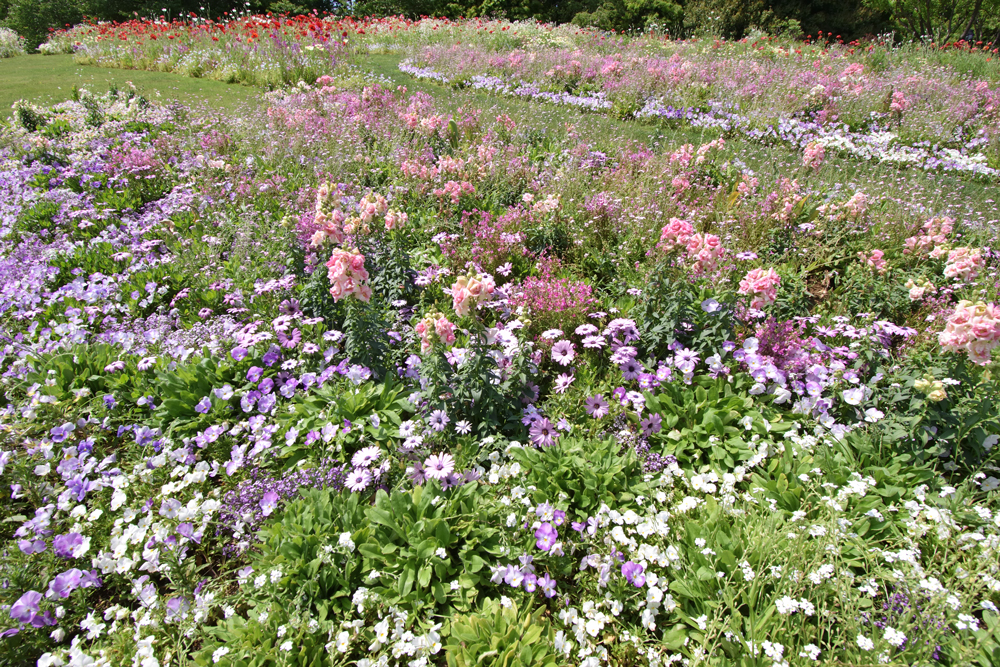NIKKOR - The Thousand and One Nights No.90

A lightweight and inexpensive zoom lens for true ultra-wide-angle photography
AF-P DX NIKKOR 10-20mm f/4.5-5.6G VR
With this tale, I would like to continue to focus on DX lenses that began with Tale 88. The ultra-wide-angle AF-P DX NIKKOR 10-20mm f/4.5-5.6G VR zoom lens was launched in 2017. Just how did this lens come to be?
by Kouichi Ohshita
The AF-S DX NIKKOR 10-24mm f/3.5-4.5G ED
As stated in Tale 88, the DX lens lineup was launched in 2003 with the release of the AF-S DX Zoom-Nikkor 12-24mm f/4G IF-ED (introduced in Tale 68) to cover the wide-angle range previously unavailable with the DX format. After that, however, focus was on the development of standard zoom lenses for cameras like the D70, and lenses with focal lengths shorter than that of the AF-S DX Zoom-Nikkor 12-24mm f/4G IF-ED were not released for quite a while. This was largely due to changes in Nikon's strategy for digital SLR cameras. Nikon had previously developed digital SLR cameras with D1-, D2-, and DX-format (APS-C size) image sensors. Reducing the imaging area of large image sensors, which were extremely expensive at the time, was an effective strategy for developing relatively inexpensive, high-performance digital cameras. However, with other manufacturers' advent of digital SLR cameras with larger imaging areas, Nikon modified its policy to include full-size image sensors in its high-end models, releasing the long-awaited D3, AF-S NIKKOR 24-70mm f/2.8G ED, and AF-S NIKKOR 14-24mm f/2.8G ED in 2007.
This determined the development policy for wide-angle DX NIKKOR lenses, and the AF-S DX NIKKOR 10-24mm f/3.5-4.5G ED was released in 2009.
The inexpensive AF-S DX NIKKOR 10-24mm f/3.5-4.5G ED, with its wide-angle end starting at just 10 mm, represented a change in direction from the relatively high-end AF-S DX Zoom-Nikkor 12-24mm f/4G IF-ED with a wide-angle end beginning at 12 mm. This was due to the fact that target users for the new wide-angle lens were changed from D1 and D2 users to users of the D300, D90, and D5000.
The mid-2010s represent the D3300 and D5500 generations. During this time, most DX cameras were popular to mid-level models, increasing demand for low-priced DX lenses. At around the same time, plans to update the DX kit lens to an AF-P lens (the "P" identifies the lens as being equipped with a stepping motor for focus drive) were underway. There was also growing impetus to release a triple-zoom set covering the ultra-wide-angle to telephoto range of focal lengths by revitalizing not only standard and telephoto zoom lenses, but also the 10-24 mm ultra-wide-angle zoom lens, which initiated development of an inexpensive ultra-wide-angle zoom lens. The concept behind this lens was "an inexpensive third lens that is easy to carry and enables true ultra-wide-angle photography".
The AF-P DX NIKKOR 10-20mm f/4.5-5.6G VR
Hiroshi Yamamoto was in charge of designing the AF-P DX NIKKOR 10-20mm f/4.5-5.6G VR. Yamamoto is much younger than I, but he currently works as an experienced designer responsible for the next generation of NIKKOR lenses. Another of Yamamoto's designs that comes to mind is that for the updated AF 85mm f/1.4. At the time the 85mm f/1.4 was converted to an AF-S lens, designers were looking for ways to make focusing groups lighter for faster focusing. Though Yamamoto's design proposal was not adopted due to its large optical system, I remember being impressed by the innovative structure he proposed that had never been seen before.
Design of the AF-P DX NIKKOR 10-20mm f/4.5-5.6G VR began in early 2015. The biggest challenge was reducing manufacturing cost. Both the AF-S 12-24mm and AF-S 10-24mm were priced at more than ¥100,000. The primary reason for this price was the cost of manufacturing the aspherical lens element in the first group. In both lenses, the first group element was a large-diameter, molded-glass aspherical lens. Molded-glass aspherical lens elements offer a great deal of freedom in the manufacturing of the aspherical surface, and also enable aspherical surfaces on both sides of the lens element. As the size of the aperture increases, however, molding the lens becomes more difficult and manufacturing cost increases. Therefore, Yamamoto abandoned all expensive molded-glass aspherical lens elements and began his design using composite aspherical lenses. The creation of composite aspherical lenses is a technology by which aspherical resin is molded onto spherical glass lenses, making it possible to manufacture large-diameter aspherical lenses at a lower cost than is possible for molded-glass aspherical lenses. However, there is less freedom in the aspherical shape than there is with molded glass, so Yamamoto was forced to design the AF-P DX NIKKOR 10-20mm f/4.5-5.6G VR within constraints imposed by the composite aspherical lens technology.
Design began with 10-18mm f/4.5-5.6 specifications. This was based on a request for uninterrupted connection with the 18-55 mm standard zoom lens. After several design improvements, however, it became clear that 2x zoom was possible. With this, the design proposal was modified for a 10-20mm f/4.5-5.6 zoom lens, and work on the design began anew. Possibilities such as reducing the filer/attachment size from 77 mm to 72 mm, the pros and cons of various zoom structures, and the adoption of less-expensive plastic aspherical lenses were examined and compared, and they finally settled on one of the more than 20 different designs to create a small, inexpensive ultra-wide-angle zoom lens that offered the best performance possible.
We must also remember the efforts of the mechanical designers who made the low price possible. If you look closely at this lens exterior, you will notice it has many similarities to the AF-P DX NIKKOR 18-55mm f/3.5-5.6G VR standard zoom lens. That's right, the AF-P DX NIKKOR 10-20mm f/4.5-5.6G VR was designed to use as many of the same mechanical parts as the earlier standard zoom lenses. The optics were also designed to use the same mechanisms. Through all of these efforts, this inexpensive, ultra-wide-angle zoom lens was released in June of 2017.
Lens construction
Figure 1 illustrates a cross section of the AF-P DX NIKKOR 10-20mm f/4.5-5.6G VR.

This lens is a four-group, concave-lead zoom lens with which the focal length is adjusted by changing the spacing between each group. In addition, the second and fourth groups move together with zooming to simplify the mechanical structure. Optically speaking, this four-group concave-lead zoom lens is very similar to the two-group concave-convex zoom structure often used for standard and wide-angle zoom lenses. By splitting the rear convex lens group in the two-group zoom structure into three groups, however, the zoom ratio can be increased with less movement, and more advanced aberration correction can be achieved throughout the entire zoom range.
Like the AF-S DX Zoom-Nikkor 12-24mm f/4G IF-ED introduced in Tale 68, a distinctive feature of this lens is that it uses aspherical lens elements for the two concave lenses in the first group, ensuring a flat image plane over a broad range of angles of view, something that is not possible with a single aspherical lens element. However, because the first group uses a relatively inexpensive composite aspherical lens element, distortion at the wide-angle end is somewhat noticeable. At the wide-angle end of the zoom range, barrel distortion is sometimes noticeable in the corners of the image. If this is a concern, enabling the camera's auto distortion control feature is recommended.
What makes this lens special is that it is compact despite being an ultra-wide-angle zoom lens. In addition, the minimum focus distance is extremely short. With a minimum focus distance of just 22 cm across the entire zoom range and a maximum reproduction ratio of 0.17x, the AF-P DX NIKKOR 10-20mm f/4.5-5.6G VR is capable of close-up, ultra-wide-angle zoom photography. As a result, the image plane begins to curve at the wide-angle end, spherical and axial chromatic aberrations increase at the telephoto end, and lateral chromatic aberration occurs throughout the entire zoom range with shooting at close distances. However, I think this reflects Yamamoto's desire to design a lens that supported shooting at the shortest distance possible with a wide-angle zoom lens. These are the features of which I hope you will make full use.
Lens rendering
As always, let's take a look at the rendering characteristics of this lens with actual images. As the topic of this tale is a DX lens, I once again used it with the D3300 to capture sample images. The lens itself was made with a size that makes it a good match for D3000- and D5000-series cameras, so it looks and feels good when used with one of these cameras. As an AF-P lens that uses a stepping motor for focusing, it should be noted that it is only compatible with the D3300 and later models in the D3000 series, and the D5200 and later models in the D5000 series. Please see our website for detailed compatibility information.

D3300 + AF-P DX NIKKOR 10-20mm f/4.5-5.6G VR
At 10 mm focal length, maximum aperture, shutter speed of 1/80 s and ISO 400, and developed using NX Studio

D3300 + AF-P DX NIKKOR 10-20mm f/4.5-5.6G VR
At 10 mm focal length, aperture setting of f/8, shutter speed of 1/125 s and ISO 100, and developed using NX Studio
Sample 1 is a distant landscape captured at the wide-angle end at maximum aperture. As always, these samples were captured in RAW format and processed with auto distortion control, lateral chromatic aberration correction, and vignette control disabled. Despite shooting at maximum aperture, the center of the image is sharp, and while resolution drops slightly at the edges of the frame, good imaging performance is maintained. The light source in the left corner of the frame is slightly distorted, but there is none of the sagittal coma flare so common with wide-angle lenses. This was probably something that Yamamoto was especially particular about. However, if you look at edges around the buildings in the frame peripheries, you will notice reddish-purple and green fringing. This is a type of aberration known as lateral chromatic aberration that can be made less noticeable in most of the image with in-camera image processing or the lateral chromatic aberration correction function in NX Studio, which may remain visible in the form of slight blue-purple color bleed in the corners of the image. This is one of the few flaws this lens exhibits. In addition, if you look at the sky portion of the image, you will notice that the corners are a little dark and look like peripheral lighting is lacking. For an ultra-wide-angle lens, however, the degree of peripheral illumination falloff is very small, leaving a good amount of peripheral light.
Sample 2 was captured at the wide-angle end with an aperture setting of f/8. Stopping down the aperture to f/8 increases the amount of peripheral light as well as sharpness at the edges of the image. However, the lateral chromatic aberration evident in Sample 1 is not reduced by stopping down the aperture and thus remains. Therefore, high-contrast subjects like the one in this sample image may exhibit noticeable color fringing along edges between light and dark. This can also be reduced throughout most of the image, though, with the chromatic aberration correction function built into the camera or NX Studio. Do you also notice the slight barrel distortion at the corners of the image?

D3300 + AF-P DX NIKKOR 10-20mm f/4.5-5.6G VR
At 10 mm focal length, aperture setting of f/8, shutter speed of 1/15 s and ISO 220, and developed using NX Studio

D3300 + AF-P DX NIKKOR 10-20mm f/4.5-5.6G VR
At 10 mm focal length, maximum aperture, shutter speed of 1/100 s and ISO 100, and developed using NX Studio
Sample 3 is a photo of hydrangea captured at the wide-angle end from an approximate distance of one meter. As the subject is three-dimensional, I stopped the aperture down to f/8. As you can see, with a subject like this with little difference between light and dark, there is no noticeable lateral chromatic aberration.
Sample 4 is a photo of flowers captured at the wide-angle end at maximum aperture. The maximum aperture is f/4.5 at the wide-angle 10 mm, so the depth of field is quite deep even at maximum aperture. If you look at background bokeh, you can see how objects just beyond the focal point are blurred, maybe looking a little noisy, but the completely blurred background exhibits natural and sufficiently pleasing bokeh.

D3300 + AF-P DX NIKKOR 10-20mm f/4.5-5.6G VR
At 14 mm focal length, maximum aperture, shutter speed of 1/50 s and ISO 400, and developed using NX Studio

D3300 + AF-P DX NIKKOR 10-20mm f/4.5-5.6G VR
At 13 mm focal length, aperture setting of f/11, shutter speed of 1/160 s and ISO 100, and developed using NX Studio
Sample 5 is a distant landscape captured at a focal length of 14 mm and maximum aperture. You can see that there is much less lateral chromatic aberration and more peripheral light compared to Sample 1, which was captured at the maximum wide-angle end. Lateral chromatic aberration will be nearly invisible in the JPEG image generated in-camera. In addition, distortion decreases dramatically from the mid-range focal length to 20 mm, so none is noticeable in this image. There is no sagittal coma flare, and imaging performance is well-balanced throughout the frame.
Sample 6 is a photo of a field of flowers captured at a focal length of 13 mm. I stopped the aperture down to f/11 to increase the depth of field. In a photo lit from the front like this one, there is no noticeable lateral chromatic aberration.

D3300 + AF-P DX NIKKOR 10-20mm f/4.5-5.6G VR
At 14 mm focal length, aperture setting of f/11, shutter speed of 1/125 s and ISO 100, and developed using NX Studio

D3300 + AF-P DX NIKKOR 10-20mm f/4.5-5.6G VR
At 11 mm focal length, aperture setting of f/8, shutter speed of 1/50 s and ISO 100, and developed using NX Studio
Sample 7 is a photo of trumpet vine flowers captured at a focal length of 14 mm and an aperture setting of f/11. When these flowers begin to bloom, you know summer is coming. The leaves and flowers in the lower left corner of the frame are out of focus, but the image is sharp throughout nearly the entire frame.
Sample 8 is a picture of Japanese bluestar that was captured at a focal length of 11 mm and an aperture setting of f/8. The flowers on this plant are small, so the photo was taken at quite a short distance, which resulted in a beautiful background bokeh. Photos like this are possible thanks to the short minimum focus distance.

D3300 + AF-P DX NIKKOR 10-20mm f/4.5-5.6G VR
At 20 mm focal length, maximum aperture, shutter speed of 1/60 s and ISO 400, and developed using NX Studio

D3300 + AF-P DX NIKKOR 10-20mm f/4.5-5.6G VR
At 20 mm focal length, maximum aperture, shutter speed of 1/640 s and ISO 100, and developed using NX Studio
Sample 9 is a distant landscape captured at the telephoto end at maximum aperture. The image is uniform with little noticeable peripheral illumination falloff or distortion. The light source reflection at bottom left in the frame is only slightly distorted and coma flare is well corrected. Lateral chromatic aberration is barely noticeable at the telephoto end even with the lateral chromatic aberration correction function disabled.
Sample 10 is a photo of loosestrife flowers captured at the telephoto end at maximum aperture. In early summer, these small white flowers bloom from a long branch that resembles a tail. Two of the characteristics of this lens is how soft rendering is from the mid-range to the maximum telephoto end, and the beautiful background bokeh it produces. This is because the lens was designed so that spherical aberration correction gradually becomes insufficient as the focus distance decreases with shooting between mid-range and telephoto focal lengths. As a result, rendering is very soft, as if the image were captured through a thin veil, and well-suited to photos of people and flowers. At the same time, axial chromatic aberration also increases as the shooting distance grows shorter, making the edges of the flowers appear slightly bluish.

D3300 + AF-P DX NIKKOR 10-20mm f/4.5-5.6G VR
At 20 mm focal length, maximum aperture, shutter speed of 1/30 s and ISO 100, and developed using NX Studio

D3300 + AF-P DX NIKKOR 10-20mm f/4.5-5.6G VR
At 20 mm focal length, maximum aperture, shutter speed of 1/125 s and ISO 360, and developed using NX Studio
Sample 11 is a photo of hydrangea captured at the telephoto end at maximum aperture. This photo was taken from a slightly longer distance than was Sample 10, so there is less background bokeh. However, natural transition from the in-focus portion (the flower cluster at left in the frame) to the blurred background (the flower cluster at right in the frame) achieves beautiful and smooth bokeh.
Sample 12 is a photo of crabapples captured at an even shorter distance at the telephoto end and maximum aperture. You can see that at such a short distance, there is a noticeable increase in flare and a drop in contrast. Spherical aberration is reduced by stopping down the aperture, so doing so by one or two stops is recommended if you are looking for higher contrast and sharper images.
A lightweight and inexpensive zoom lens for true ultra-wide-angle photography
This lens, announced on May 31, 2017, and released on June 30 of the same year, is still sold today. The 10-20 mm range of focal lengths makes this DX lens a true ultra-wide-angle lens covering the 15 mm to 30 mm (equivalent in [135] 35mm/FX format) range of focal lengths. The AF-S NIKKOR 14-24mm f/2.8G ED is well-known as a high-performance, ultra-wide-angle zoom lens for the FX format. While it isn't as fast (bright) and has a longer focal length at the maximum wide-angle end, the AF-P DX NIKKOR 10-20mm f/4.5-5.6G VR embodies the concept of "an inexpensive lens that is easy to carry and enables true ultra-wide-angle photography" upon which it was based, in a size that is roughly the same as a standard DX zoom lens. Many Nikon employees use this lens, some even use it as a handy ultra-wide-angle lens for their FX-format cameras. I recommend that those who have purchased a double zoom lens kit, as well as those who enjoy using high-magnification zoom lenses try it out and experience the appeal of ultra-wide angles.

NIKKOR - The Thousand and One Nights
The history of Nikon cameras is also that of NIKKOR lenses. This serial story features fascinating tales of lens design and manufacture.

